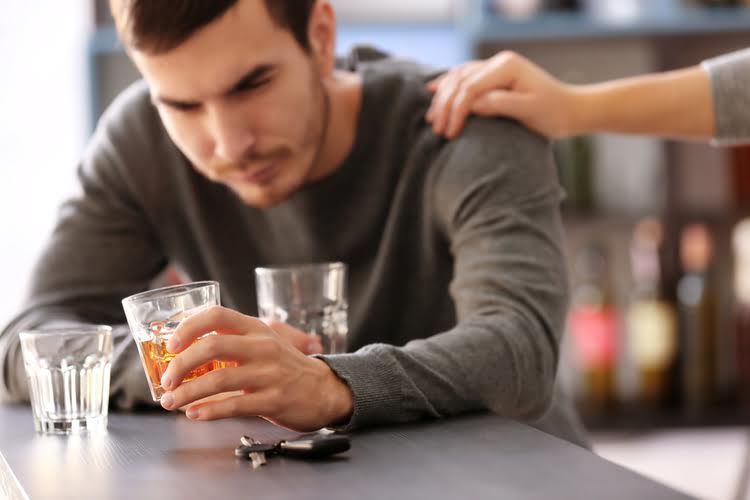Like the substance user who tries to fix, manage, and control the addiction and mental disorder but to no avail, the family also fails to fix, manage, and control the substance user. Interventions are always about intervening in mental health concerns, destructive behaviors, and lifestyles. It would appear that we are intervening in the substance use and the substance use in and of itself is not why families call nor why people seek help. Intervention is a commonly used term among addiction and mental health professionals. Most people think of an intervention as something you see on television.

PSYCHOTHERAPY: PLAY THERAPY
As you habituate to the feelings that your obsessions bring up, you’ll be able to reduce your dependence on compulsions. Research shows that most people who have alcohol problems are able to reduce their drinking or quit entirely. You may be able to better compare https://puafo.com/category/medicines/health-clinic/page/8 your options by assessing whether and how the program or provider measures success. Currently, there are three medications approved for AUD in the United States, and they are an effective and important aid in the treatment of people with this condition.
- Recognition of the elements of evidence-based psychosocial interventionshighlights the similarities across interventions as well as the truedifferences.
- This involves a controlled setting where individuals are reinforced for desirable behaviors with tokens, such as a poker chip, that can be exchanged for items or privileges.
- How often have you heard an alcoholic or addict say they are of legal age and have the right to do whatever they want?
- Play therapy is often used with children since they are not likely to sit on a couch and recall their dreams or engage in traditional talk therapy.
A structured approach to positive behavioral change
- IE is especially helpful for people with OCD who struggle the most with inner distressing thoughts, images, and impulses, and not so much with observable rituals.
- Some professionals suggest waiting until the substance user abstains from drugs or alcohol before intervening.
- Open the person’s eyes to the effect their substance misuse or other issue has on themselves as well as family and friends.
- Psychotherapy can help reduce a person’s anxiety, depression, and maladaptive behaviors.
Clear, respectful communication enhances the intervention’s impact and fosters a supportive environment for a positive outcome. Research shows evidence to support the use of mindfulness in treating OCD, particularly for those who have not benefited from traditional treatment. But there is not enough evidence for it to be considered a treatment by itself.

How Can Interventions Foster Compassion, Empathy, And Positive Reinforcement?

If medication and therapy don’t bring substantial improvement, transcranial magnetic stimulation (rTMS) or deep transcranial magnetic stimulation (dTMS) may be options. In these procedures, magnetic waves are used to alter brain activity to improve OCD symptoms. One study found both short- and long-term reductions in obsessive-compulsive symptoms and positive changes in mood following http://cxema.ru/forum/topic_308/ 6 to 12 weeks in an exercise program. Researchers said more research was needed with larger samples to confirm their findings. Transcranial magnetic stimulation (TMS) is a noninvasive process that can change brain activity, potentially lessening OCD symptoms. TMS is also called rTMS (the “r” standing for “repetitive”), to distinguish it from dTMS, or the deep version.
The goal of the therapist is to help a person uncover buried feelings by using techniques such as free association and dream analysis. View a brief video in which Judith Beck talks about cognitive therapy and conducts a session with a client. Buprenorphine may be prescribed by physicians who have met the statutory requirements for a waiver in accordance with the Controlled Substances Act (21 U.S.C. 823(g)(2)(D)(iii)).146 However, physicians using the waiver are limited in the number of patients they can treat with this medication. This patient limit does not apply to OTPs that dispense buprenorphine on site because the OTP operating in this capacity is doing so under 21 U.S.C. 823(g)(1) and 42 CFR Part 8, and not under 21 U.S.C. 823(g)(2)(B). A medical and legal concept involving the transfer of any legally prescribed controlled substance from the person for whom it was prescribed to another person for any illicit use. Your friend or family member may attempt to change the topic or direct the conversation away from themselves.
Remember that a therapist is an expert on their specific treatment approach, but you are the expert on yourself. Your therapist relies on you to tell them your history, symptoms, https://southendstyleblog.com/2015/08/19/travel-guide-sicily-italy/ and needs, and you can share what your priorities are in treatment. A&E’s television show “Intervention” has increased general public awareness of interventions in recent years.
- Emmie has now gone three weeks without wetting her bed and is looking forward to her first sleepover this weekend.
- Interventions can help modify behaviors that interfere with a person’s well-being and the well-being of family and friends.
- A therapeutic intervention is an effort to help someone in need who declines treatment or is otherwise unable to help themselves.
- In general, as patients progress in treatment and begin to meet the goals of their individualized treatment plan, they transfer from clinical management in residential or intensive outpatient programs to less clinically intensive outpatient programs that promote patient self-management.
- In IE, you create a story about yourself in a situation involving your obsession, which ends in the worst possible outcome.
When Is The Right Time To Stage An Intervention For Substance Abuse?

When addressing drinking problems, it’s important to also seek treatment for any accompanying medical and mental health issues. The foundational idea behind evidence based treatment is that best practices are determined by research evidence that has been compiled by comparing various forms of treatment (Charman & Barkham, 2005). These treatments are then operationalized and placed in treatment manuals—trained therapists follow these manuals. The benefits are that evidence-based treatment can reduce variability between therapists to ensure that a specific approach is delivered with integrity (Charman & Barkham, 2005). Therefore, clients have a higher chance of receiving therapeutic interventions that are effective at treating their specific disorder. While EBPP is based on randomized control trials, critics of EBPP reject it stating that the results of trials cannot be applied to individuals and instead determinations regarding treatment should be based on a therapist’s judgment (Mullen & Streiner, 2004).

Combining Evidence-based Care with Traditional, Spiritual, and Cultural Beliefs
At the same time, some specific elements differentiate among manualizedpsychosocial interventions or are unique to a given manual. Of two interventions that address the needs ofthe seriously mentally ill, one includes the element of “in vivodelivery of services” (assertive community treatment for theseriously mentally ill [Test,1992]), and the other does not (illness management andrecovery [McGuire et al.,2014]). Figure 3-1depicts nonspecific elements and specific elements that are sharedversus unique for different approaches for the treatment ofposttraumatic stress disorder. Cognitive-behavioral therapy (CBT) helps clients examine how their thoughts affect their behavior. It aims to change cognitive distortions and self-defeating behaviors. In essence, this approach is designed to change the way people think as well as how they act.

Recent Comments